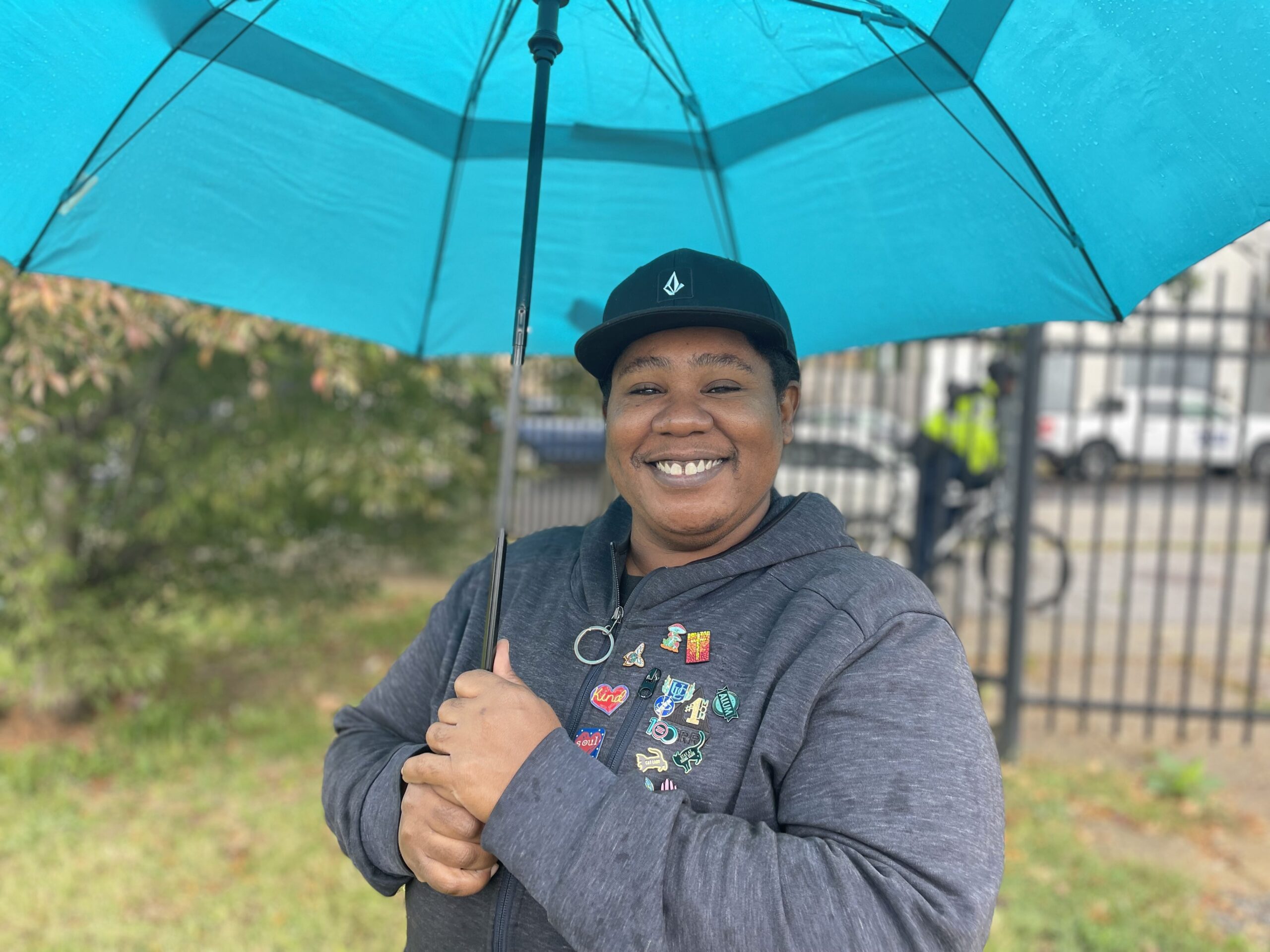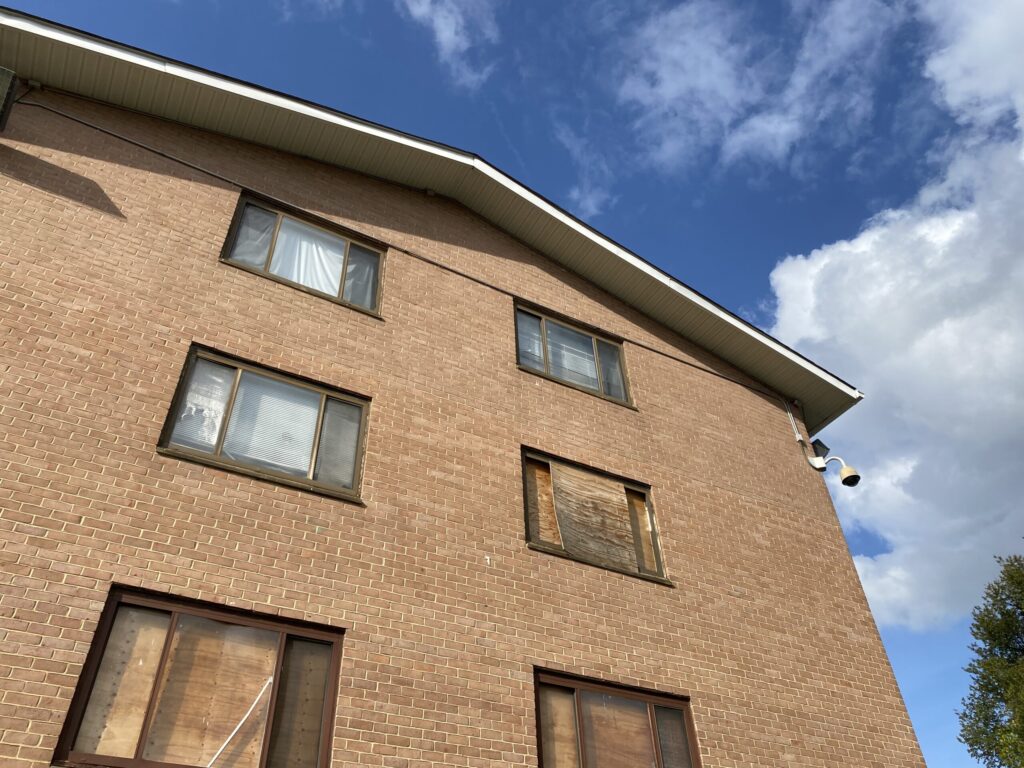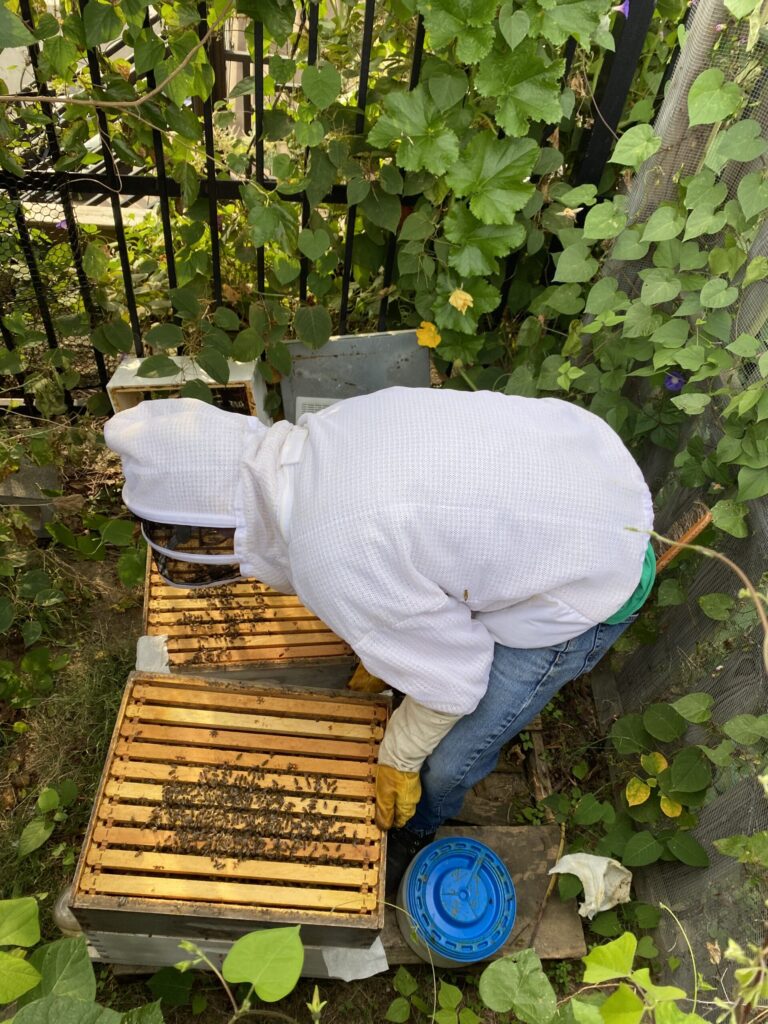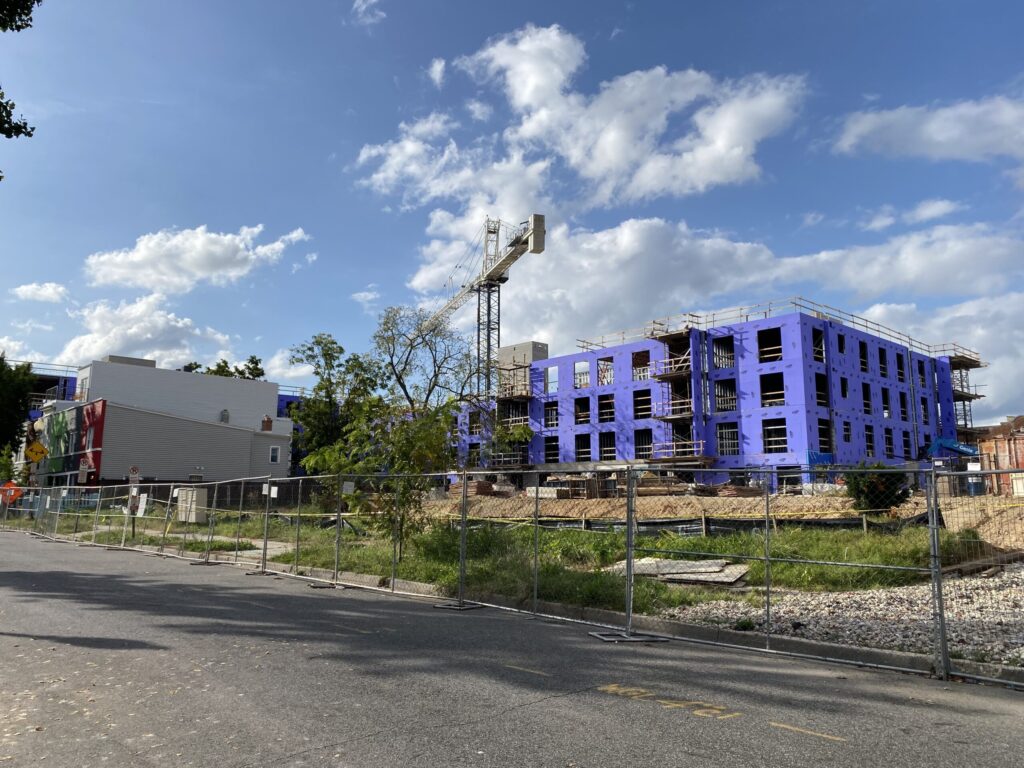
Eva Chillura

Eva Chillura
A stillness settles over Shonta’ High and her 8-year-old daughter Amarissa.
Their hands are sticky and coated with honey. The hottest of suns beats through the gaps in concrete buildings. They’ve just finished harvesting their own honey from the beehives at Bruce Monroe community garden this August.
This is a moment of stillness that they have rarely felt in the past year after being pushed out of their home just 10 months ago. A stillness that may not last as the legal battle with the city continues over developing this park, the new place they call home.
High and her daughter were tending to the bees with the park’s self-appointed beekeeper and advocate Marc Poe. As they harvested raw honey for themselves, Amarissa ignored her mom’s plea to not mess with the bees that day. She was stung on her ear.

But the park represents more than just abundant plots in a community garden, it is a place for the people in Ward 1 to build community. This is something High and other residents of the Park Morton public housing complex have lost in the past 16 years as more and more of the historic public housing units are demolished and residents are displaced.
Now the city is planning on developing housing units — to partially replace the old public housing units — where the green space is currently at Bruce Monroe Elementary School in Ward 1, she said.
“It’s literally one of the few green spaces left right here in Ward 1. So it gets used a lot. You know, there’s tennis courts, there’s a garden back here in the back,” High said. “[Amarissa] gets a lot out of it. She gets play time, she gets to meet new friends. We come up here and roller skate on the basketball top when there’s nobody out here playing. So this place means everything to us. We need to keep this green space.”

High was a resident of the Park Morton apartment complex for 21 years and president of their Resident Council. She founded her own company in disaster preparedness and relief for her community, High Alert Emergency Preparedness. Her inspiration came after seeing the basement community spaces and outdoor green spaces at Park Morton flood after light rain, seeing one too many of her neighbors’ units catch on fire due to old wiring and lack of maintenance, and seeing how Covid-19 isolated this community even more, leaving seniors in the units without adequate supplies or care.
But her relationship with Park Morton and Bruce Monroe is complicated.
In 2007, D.C. City Council passed the New Communities Initiative to help revitalize public housing in the city, specifically targeting Park Morton without displacing or unhousing its current residents. They also promised to rebuild the community to be more sustainable and resilient to the effects of climate change.
“Through both the neighborhood planning and architectural design, the plan promotes sustainability in a variety of ways,” according to the final draft of the Park Morton-specific New Communities Initiative. “The plan promotes development that meets the requirements of the D.C. Green Building Act of 2006 using the Green Communities Criteria as a guide for sustainable design.”
These proposed new residences would require eight main sustainability points:
It has been 16 years. There has been little progress and little follow-through on the promises made to the residents of Park Morton. High was not offered temporary housing and had to take the city to court to fight for the voucher that was previously promised to her.
“One of the reasons I went into business for myself was because of this, and I’m certified to do it,” High said. “I kept telling housing authority, you need to work with me to have an emergency preparedness plan for the residents of Park Morton in case this flooding goes way past the circle and goes past the first floor. They wouldn’t do it… We definitely feel left behind.”
Flooding in Ward 1 has increased as a staggering effect of climate change. In a report published by the D.C. Flood Task Force in July 2023 the city recognized the disproportionate impact of flooding on low income neighborhoods.
Increased flood patterns in 2020 “underscored the growing risk of severe flooding due to climate change and the urgency to do something about it,” Tommy Wells, Director of District Department of Energy and Environment, and David L. Gadis, Chief Executive Officer and General Manager of DC Water said in a statement in 2021.

The task force recognized that flood maps of D.C. needed updating, as more basement units and businesses flooded in the city, and they needed to create a better plan for mitigating the effects of climate change for the most vulnerable communities.
High said the concrete edifices of Park Morton have been getting hotter and hotter each year as well. The buildings constructed in 1961 trap the heat as Ward 1 becomes more prominent in Washington’s urban heat island. Park View, the neighborhood that houses Park Morton has a Heat Vulnerability Index (HVI) of 0.583 which categorizes this neighborhood as having higher risks of health complications with the rising temperatures, according to the D.C. Policy Center.
Park Morton is now a total of five buildings – three of which are chain locked up with boarded windows. The units only have two buildings with residents, the majority of whom are seniors.
“When I became a resident there, I noticed that, you know, once you, once you found your place in the community, they became a family. You built kinships,” High said.
“Excuse me if I get a little emotional because I’m still a little raw from everything, but when they broke up the community, everybody didn’t have that sense of security anymore.”

She protested leaving her home, building 615. Neighbors of Park Morton remember seeing signs that read “Let us stay!” and “We want to stay!”
“We celebrated birthdays, holidays. Just any time to celebrate, you know,” High said. “It could be raining outside like this today, and I could just knock on Candy door, knock on Lou door and be like, ‘Hey, y’all trying to eat something? Y’all trying to have a drink? What y’all trying to do?’ And next thing you know Candy cooking up something, I’m cooking up something, Lou fixing drinks.”
As president of the Resident Council, she wants to advocate and fight for her community to stay a community. As a mom, she was hurt to leave the place where she raised her children, where she founded her company, she said.
“They always make promises, but the problem is they don’t honor their promises,” High said. “That was one of the hardest moves.”
And now, the one other space that High and her daughter made their community in Bruce Monroe Park will be partially developed to replace the Park Morton apartments. One of the only green spaces left in their community is in the process of being sold to developers to create a senior unit, a row of townhomes and a studio-1 bedroom complex, Poe said.
This is despite a community survey conducted by the Advisory Neighborhood Commissions (ANC) in 2016 that revealed that 647 out of 814 subjects polled preferred the Bruce Monroe Park be used for a “Park” – 431 preferred “Public Uses” and 455 disliked “Commercial/Residential Development.”
Poe expressed that this survey was misleading and provided more opportunities for respondents to pick what kind of “development” they preferred.

“The park is getting ready to be, partially, I should say, disposed of because our Councilwoman Breanne Nadeau… decided without any community feedback that this was going to be the replacement area for Park Morton Apartments,” High said.
The councilwoman denied an interview request about Park Morton and Bruce Monroe.
“I almost feel like housing has betrayed us,” High said. “It’s like a magic trick when the magician gets you to watch one hand while he slights the other.”
She is now forced to pick between preserving a sustainable green space or new housing for the displaced Park Morton residents – at least one third of them, as only 33% of the new development would be housing for previous public housing residents, she said.
“I used to be a pessimist, but now I’m an optimist,” High said. “I see that when you grind your heels in, you can really get something done. Something has to give. Something has to give.”

Poe is involved with the two lawsuits against the city in the DC Court of Appeals to preserve Bruce Morton Park as a green space and prevent the city from moving forward with the development. One of the lawsuits succeeded in 2016 which resulted in the Court of Appeals requiring the developers to “vacate and be remanded,” Poe said. Starting in 2021, Poe is now appealing the “Comprehensive Plan” order.
“When they did a survey of what was going to stay a park and what was going to be developed, they conveniently took over another 500 square feet of space for them,” Poe said. “It’s not much, [but] it says it should be exact.”
The new order from the city has tried to redefine what this development would mean for the replacement units of the residents in Park Morton.
“Where [High] used to live, they had two bedroom apartments,” Poe said. “They could call it a housing unit. So they’re replacing a house – a two bedroom housing unit – with a studio/one bedroom housing unit because they’re both one for one replacement is what they call it. So it’s bullshit.”
The appeal moves forward to oral arguments Nov. 8 of 2023. Meanwhile, the state of Park Morton, Bruce Monroe Park and the community that they serve is stuck in this period of waiting.

“Hope is like a hot air balloon, right? It takes a while for your hope to take off. Because there’s always some resistance,” High said. “But when it gets up there, it’s something. As long as you’re floating – meaning fighting – being part of your active community, helping with something that matters to the people, there’s always going to be hope. That balloon will float on for a long time.”